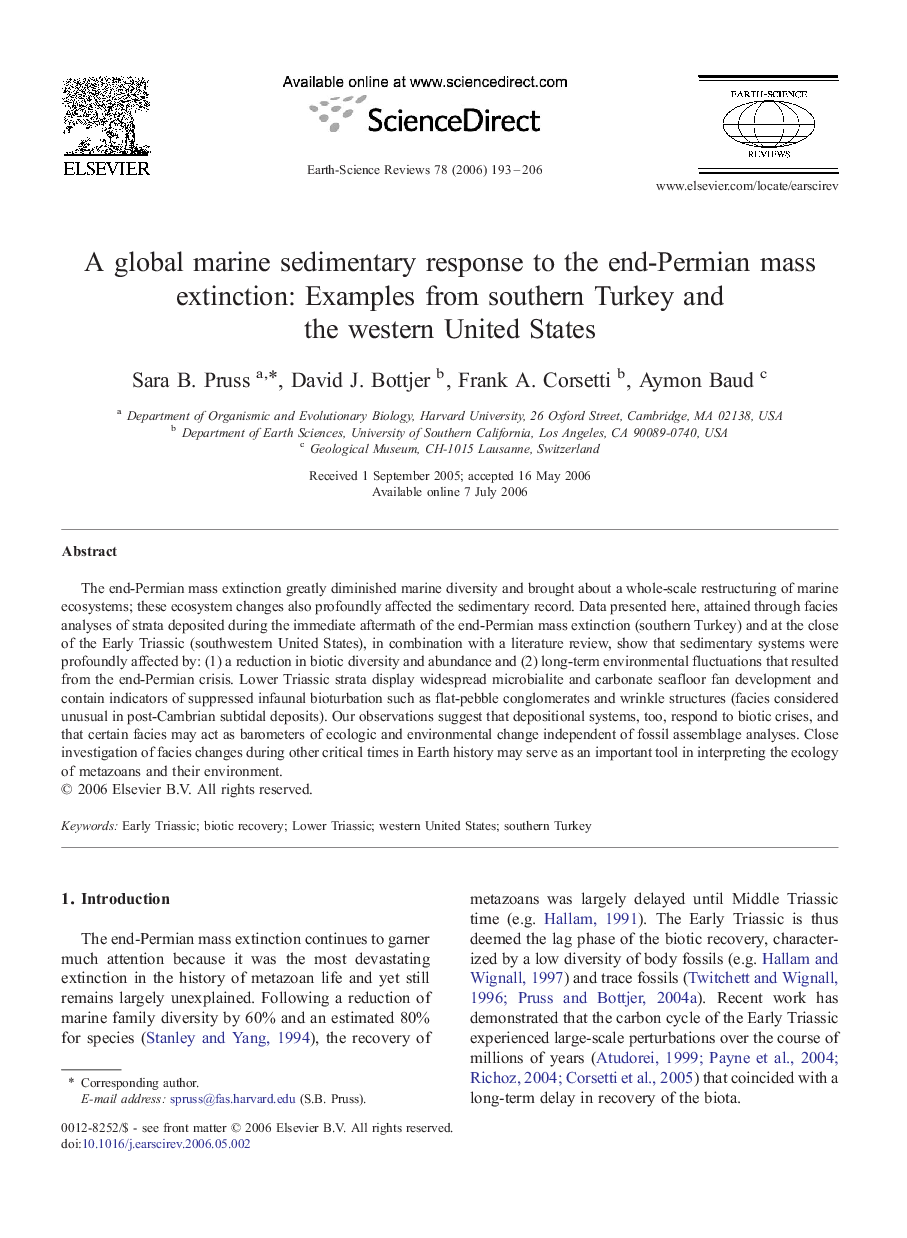| Article ID | Journal | Published Year | Pages | File Type |
|---|---|---|---|---|
| 4726454 | Earth-Science Reviews | 2006 | 14 Pages |
The end-Permian mass extinction greatly diminished marine diversity and brought about a whole-scale restructuring of marine ecosystems; these ecosystem changes also profoundly affected the sedimentary record. Data presented here, attained through facies analyses of strata deposited during the immediate aftermath of the end-Permian mass extinction (southern Turkey) and at the close of the Early Triassic (southwestern United States), in combination with a literature review, show that sedimentary systems were profoundly affected by: (1) a reduction in biotic diversity and abundance and (2) long-term environmental fluctuations that resulted from the end-Permian crisis. Lower Triassic strata display widespread microbialite and carbonate seafloor fan development and contain indicators of suppressed infaunal bioturbation such as flat-pebble conglomerates and wrinkle structures (facies considered unusual in post-Cambrian subtidal deposits). Our observations suggest that depositional systems, too, respond to biotic crises, and that certain facies may act as barometers of ecologic and environmental change independent of fossil assemblage analyses. Close investigation of facies changes during other critical times in Earth history may serve as an important tool in interpreting the ecology of metazoans and their environment.
